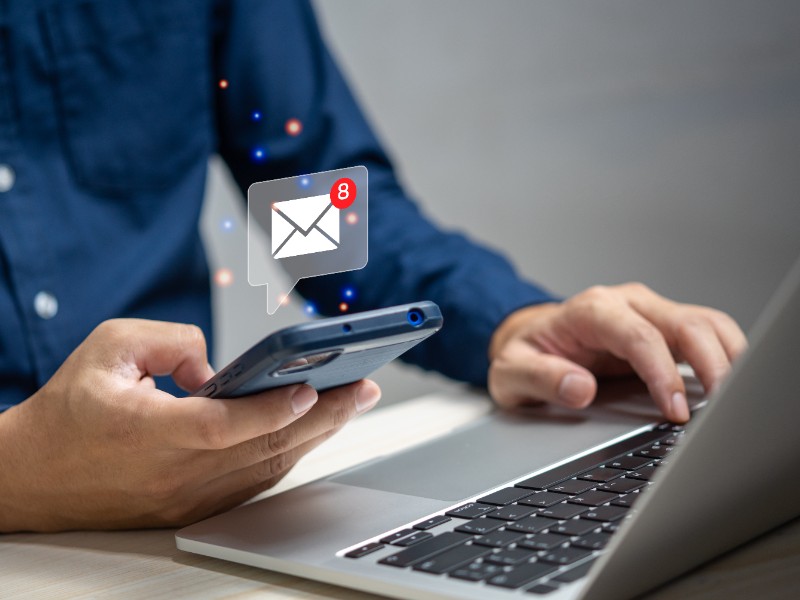Email marketing remains one of the most effective strategies for reaching potential customers and fostering loyalty among existing ones. However, it’s easy to make mistakes that can reduce the impact of your campaigns and harm your brand’s reputation. In this article, we’ll explore some of the most common email marketing mistakes and provide practical tips to avoid them.
1. Not Segmenting Your Email List
a. Why is this a mistake?
Sending the same message to your entire email list may seem like a quick way to reach a large audience, but it doesn’t take into account the needs and preferences of different segments of your audience. This can make your emails irrelevant to many of your subscribers, increasing unsubscribe rates and reducing open rates .
b. How to avoid it
Segmenting your list is key to improving the relevance of your emails. You can segment based on:
Demographics : Age, location, gender.
Buying behavior : Those who have purchased before, those who have shown interest in a product.
Previous interactions : Those who opened your emails but didn’t purchase, or who have never interacted.
2. Don’t Personalize Emails
a. Why is this a mistake?
A generic email with a standard greeting like “Hello, dear customer” can give the impression that you don’t care about your audience. Personalization is crucial to creating a deeper connection and improving open and conversion rates.
b. How to avoid it
Including the recipient’s name in the subject line or greeting is a good start. Additionally, you can personalize the content based on the user’s purchasing preferences or interaction history. This will make your message feel more relevant and targeted specifically to them.
3. Ignoring Mobile Optimization
a. Why is this a mistake?
More and more people are accessing email from their mobile devices. If your email isn’t optimized for mobile , users may have difficulty reading it or interacting with links, which could lead to increased unsubscribe rates .
b. How to avoid it
Make sure your emails are responsive , meaning they adapt correctly to any screen size. Use a simple design and make sure images display well on small devices. Also, make sure buttons and links are easy to click.
4. Not Having a Clear Call to Action
a. Why is this a mistake?
The goal of every email marketing campaign is to motivate recipients to take an action, whether it’s purchasing a product, registering for an event, or visiting your website. Without a clear call to action (CTA) , users may not know what to do after reading your email.
b. How to avoid it
Include a prominent, specific CTA in every email. Make sure it’s easy to find and clearly understands what you want the user to do. Use action verbs like “Buy now,” “Sign up,” or “Find out more.”
5. Sending Emails Too Frequently
a. Why is this a mistake?
Although email marketing is effective, bombarding your subscribers with emails too frequently can be annoying and lead to a high unsubscribe rate . People need time to process information and don’t want to feel intruded upon.
b. How to avoid it
Find the right balance between frequency and value. Don’t send emails every day unless absolutely necessary. Ideally, send emails with a consistent frequency that doesn’t overwhelm your audience, such as once a week or once a month, depending on your industry and audience.
6. Not Testing or Analyzing the Performance of Your Campaigns
a. Why is this a mistake?
Email marketing shouldn’t be a blind activity. If you don’t test different aspects of your emails, such as subject lines, images, content, and CTAs, you won’t know what works best for your audience.
b. How to avoid it
Run A/B tests on your campaigns to compare different versions of the same email and see which performs best. Analyze metrics like open, click, and conversion rates to evaluate the performance of your emails. This will allow you to continuously improve your future campaigns.
7. Do Not Include an Unsubscribe Link
a. Why is this a mistake?
It’s mandatory to include an easy and visible option for users to unsubscribe if they no longer wish to receive your emails. Failure to do so is not only bad practice but may also violate privacy laws, such as the GDPR or the CAN-SPAM Act .
b. How to avoid it
Include a visible unsubscribe link at the bottom of your emails. Make sure it’s easy to find and works properly. This will maintain subscriber trust and avoid legal issues.
8. Not Keeping a Catchy Subject Line
a. Why is this a mistake?
The subject line is the first thing recipients see when they receive an email, and it has a direct impact on the open rate . If the subject line is boring, confusing, or too generic, users are unlikely to open the email.
b. How to avoid it
Create compelling, clear subject lines that pique the recipient’s interest. Use persuasive language, add elements of urgency if necessary (such as “Last Chance” or “Exclusive Offer”), and avoid excessive use of capital letters or exclamation points, as these can appear spammy.
9. Forgetting to Include Compelling Visuals
a. Why is this a mistake?
An email lacking compelling visuals can appear unprofessional or difficult to read, which can hinder its effectiveness. Images and visual elements help capture attention and make the message more compelling.
b. How to avoid it
Incorporate quality images, infographics, or videos that complement your message. Make sure your images are optimized to load quickly and don’t slow down the user experience. Also, don’t overuse images; a good balance of text and images is ideal.
10. Not Updating Your Mailing List Regularly
a. Why is this a mistake?
Email addresses expire or become inactive over time, which can negatively impact your delivery rate and sender reputation. Sending emails to invalid addresses can increase bounce rates and reduce the effectiveness of your campaign.
b. How to avoid it
Keep your email list up-to-date by removing invalid addresses and unsubscribing from those who no longer interact with your emails. Use email verification tools to ensure your contacts are valid.
Conclusion: Mistakes in Email Marketing
Email marketing can be a powerful tool if used correctly, but common mistakes can reduce its effectiveness. By avoiding these errors, you’ll improve your subscribers’ experience and increase your chances of achieving successful results. The key is to be relevant, personalized, and thoughtful with the content you send. With a more professional and strategic approach, your email marketing campaign can generate significant benefits for your business.


